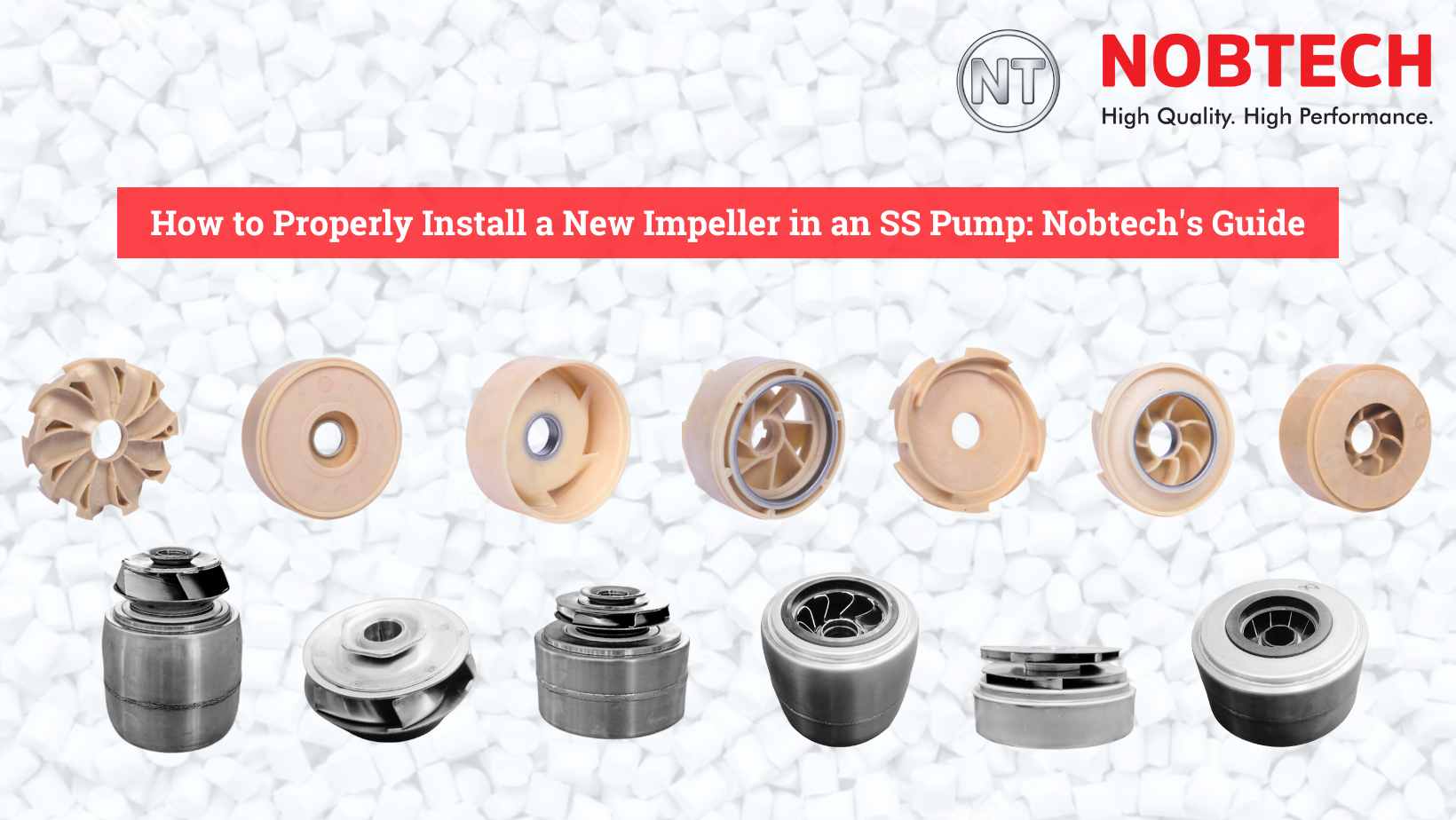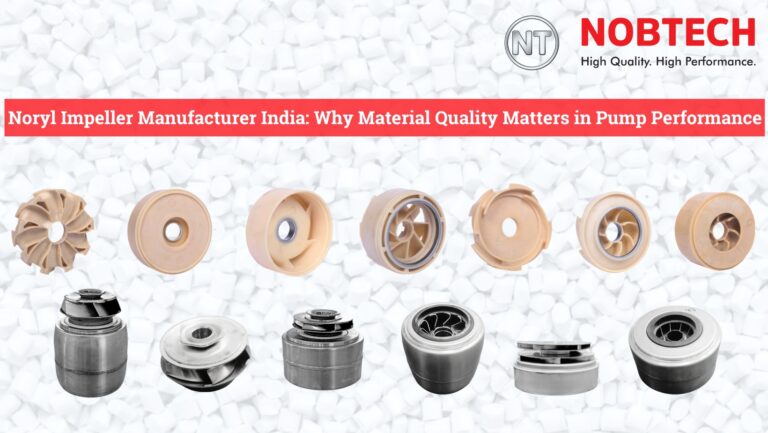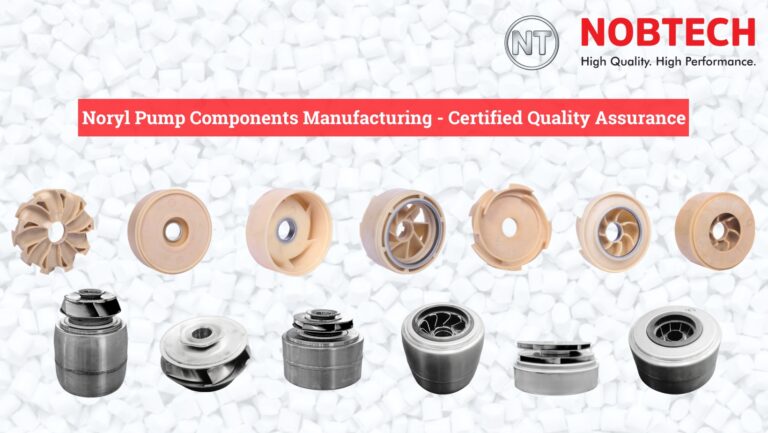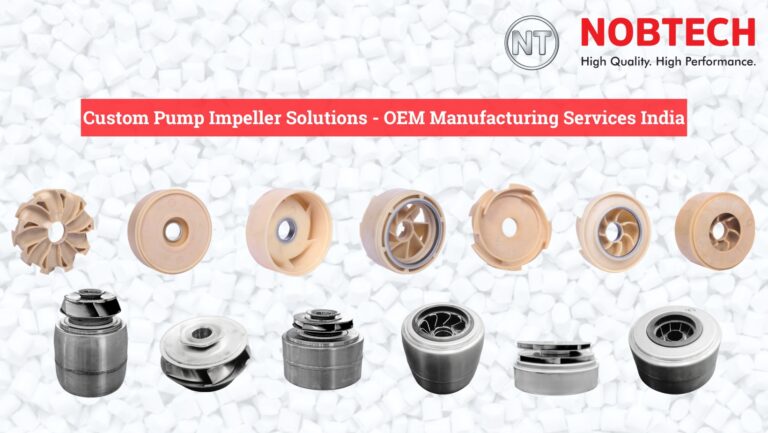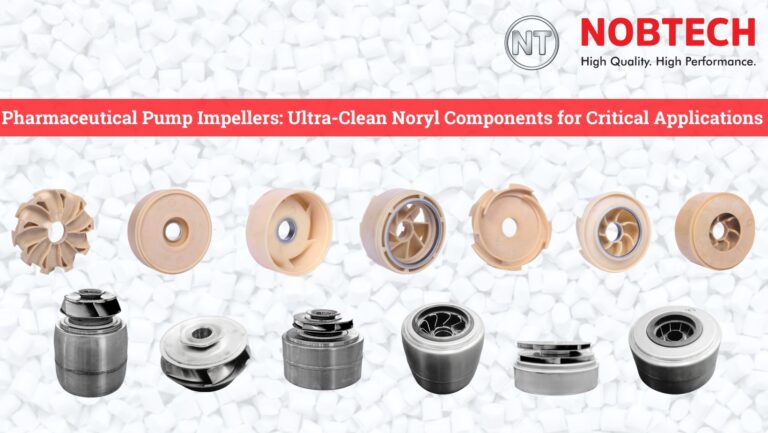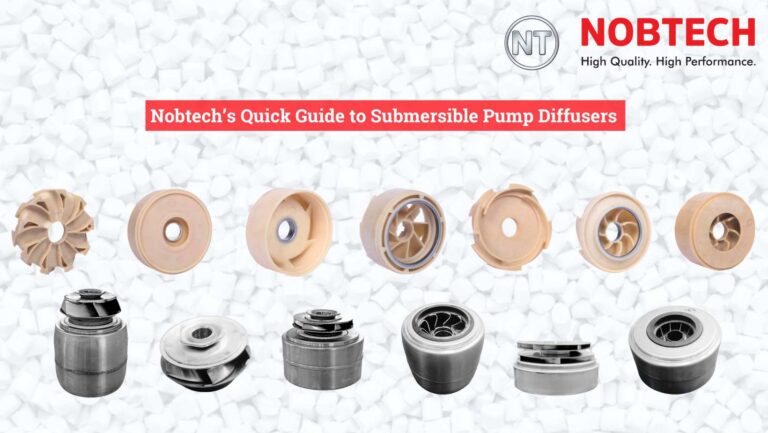How to Properly Install a New Impeller in an SS Pump: Nobtech’s Guide
Ensuring the optimal performance and longevity of your stainless steel (SS) pumps hinges significantly on the correct installation and maintenance of their critical components, particularly the impeller. A new impeller, when installed properly, can rejuvenate a pump’s efficiency, reduce operational noise, and prevent premature wear on other parts. This guide, “How to Properly Install a New Impeller in an SS Pump: Nobtech’s Guide,” aims to provide a comprehensive walkthrough for technicians, engineers, and maintenance professionals. The precision involved in this task cannot be overstated, as even minor errors can lead to significant operational issues, increased energy consumption, or even catastrophic pump failure. For businesses relying on consistent pump performance, understanding the intricacies of impeller replacement is paramount. NOBTECH, a specialist in high-quality pump components, understands these challenges and offers this guide to support its global clientele.
The Critical Role of the Impeller in SS Pumps
The impeller is often described as the heart of a centrifugal pump. Within an SS pump, this rotating component is responsible for converting driver energy (typically from an electric motor) into kinetic energy in the fluid being pumped, and then into pressure. As the impeller spins, its vanes create a low-pressure area at the eye (center), drawing fluid in. The fluid is then accelerated radially outward by the centrifugal force generated by the rotating vanes and discharged into the pump casing (volute or diffuser) at a higher velocity and pressure. The design and condition of the impeller directly impact the pump’s flow rate, head (pressure), and overall efficiency. Using premium impellers, such as the Stainless Steel Submersible Pump Impellers and Bowls manufactured by NOBTECH, is the first step towards achieving peak pump performance. This dedication to quality is why so many global pump manufacturers and OEMs trust NOBTECH. This detailed procedure, “How to Properly Install a New Impeller in an SS Pump: Nobtech’s Guide,” will help you maximize the benefits of such quality components.
Why Precision in Impeller Installation Matters
Improper installation of an impeller in an SS pump can lead to a cascade of problems. If the impeller is not correctly aligned or secured, it can cause imbalance, leading to excessive vibration and noise. This vibration not only accelerates wear on the impeller itself but also on bearings, seals, and the motor. Incorrect clearance between the impeller and the pump casing can result in reduced hydraulic efficiency, recirculation of fluid, or even contact and damage between the rotating impeller and stationary casing. Cavitation, a damaging phenomenon caused by the formation and collapse of vapor bubbles, can also be exacerbated by improper installation or the use of a poorly designed impeller. Conversely, a meticulously performed installation, following steps like those in “How to Properly Install a New Impeller in an SS Pump: Nobtech’s Guide,” ensures that the pump operates at its designed efficiency, minimizes energy consumption, and extends the operational lifespan of both the impeller and the entire pump assembly. For businesses looking to procure high-quality impellers, NOBTECH offers a range of https://nobtech.in/products/ designed for durability and optimal performance.
Pre-Installation Preparations: NOBTECH’s Recommended Checklist
Before commencing the actual installation, thorough preparation is essential. This phase is crucial for safety and ensuring a smooth process. Adhering to a structured approach, as advocated in “How to Properly Install a New Impeller in an SS Pump: Nobtech’s Guide,” sets the stage for success.
H3: Safety First
Always prioritize safety. Ensure the pump is electrically isolated by following proper lockout/tagout (LOTO) procedures. This prevents accidental startup during maintenance. Wear appropriate Personal Protective Equipment (PPE), including safety glasses, gloves, and steel-toed boots. If dealing with hazardous fluids, ensure proper containment and handling protocols are in place.
H3: Gather Necessary Tools and Parts
Assemble all required tools before you begin. This typically includes a set of wrenches, socket set, Allen keys, a bearing puller (if applicable for impeller removal), a soft mallet, feeler gauges for checking clearances, cleaning supplies (wire brushes, cloths, solvent), and any necessary lifting equipment for heavier pumps. Most importantly, ensure you have the correct replacement impeller. NOBTECH specializes in manufacturing Stainless Steel Submersible Pump Impellers and Bowls, as well as Noryl Submersible Pump Impellers and Diffusers, catering to global pump manufacturers, exporters, OEMs, and large-scale procurement agents. Verify the part number and specifications against the pump’s requirements.
H3: Inspect the New Impeller and Pump Components
Carefully inspect the new NOBTECH impeller for any signs of damage that may have occurred during shipping or handling. Check the pump shaft for straightness and any scoring or wear, particularly in the seal and bearing areas. Examine the existing pump casing (volute or diffuser) for wear, erosion, or corrosion. Replacing other worn parts like seals, gaskets, and O-rings at this stage is highly recommended to prevent future failures.
H3: Prepare the Pump
Ensure the pump is isolated from the system by closing suction and discharge valves. Drain the pump casing completely to avoid spills and ensure a dry working environment. If the pump is part of a larger system, communicate the maintenance activity to relevant personnel.
Step-by-Step Guide: Installing impeller in SS pump with NOBTECH Components
With preparations complete, you can proceed with the installation. This section of “How to Properly Install a New Impeller in an SS Pump: Nobtech’s Guide” details the meticulous steps involved.
H3: Disassembling the Pump
The method of disassembly will vary depending on the pump design (e.g., end-suction, split-case, submersible). Generally, you will start by removing the pump casing bolts. Carefully detach the casing half or backplate to expose the impeller. Note the orientation and securing mechanism of the old impeller. It might be threaded onto the shaft, secured with a key and nut, or held by retaining screws. Use the appropriate tools (e.g., strap wrench to hold the shaft, impeller wrench) to remove the old impeller. Avoid applying excessive force that could damage the shaft or other components. For submersible pumps, which often feature NOBTECH’s specialized impellers, the disassembly might involve removing multiple stages.
H3: Cleaning and Thorough Inspection
Once the old impeller is removed, thoroughly clean the pump shaft, the threads or keyway, and the internal surfaces of the pump casing. Remove any rust, scale, or debris. This is a critical step often overlooked but vital for the proper seating and performance of the new impeller. Inspect the shaft sleeve (if present), mechanical seal components, and wear rings for any signs of wear or damage. NOBTECH’s commitment to quality means their impellers are designed for precision fit, but this can only be achieved if the mating surfaces are clean and undamaged.
H3: Installing the New NOBTECH Impeller
Before mounting the new NOBTECH impeller, lightly lubricate the pump shaft (if recommended by the pump manufacturer) to facilitate easier installation. Carefully slide the new impeller onto the shaft, ensuring it is in the correct orientation (rotation direction is critical). If a keyway is used, ensure the key is properly seated in both the shaft and the impeller hub. Secure the impeller using the original method – whether it’s tightening an impeller nut to the specified torque or fastening retaining screws. Do not over-tighten, as this can damage the impeller or shaft. Proper installation is key to realizing the benefits of high-quality components from manufacturers like NOBTECH, who serve leading OEMs globally.
H3: Setting Impeller Clearances
This is a crucial step in “How to Properly Install a New Impeller in an SS Pump: Nobtech’s Guide.” The clearance between the impeller vanes and the pump casing (or wear rings) significantly affects pump efficiency and prevents contact. Refer to the pump manufacturer’s manual for the specified clearances. Use feeler gauges to measure and adjust the clearance as needed. For some pump designs, this might involve adjusting the shaft position or using shims. NOBTECH impellers are manufactured to tight tolerances, which aids in achieving these precise clearances.
H3: Reassembling the Pump
Once the new impeller is securely installed and clearances are set, begin reassembling the pump. Replace any gaskets, O-rings, and mechanical seals with new ones to ensure a leak-free seal. Carefully align the pump casing or backplate and tighten the bolts evenly in a crisscross pattern to the manufacturer’s recommended torque specifications. Ensure the shaft rotates freely by hand after assembly; there should be no binding or rubbing sounds.
Post-Installation Checks and System Commissioning
After the physical installation, several checks are necessary before putting the pump back into full service. This final phase of “How to Properly Install a New Impeller in an SS Pump: Nobtech’s Guide” is vital.
First, prime the pump according to the manufacturer’s instructions. Never run a centrifugal pump dry, as this can quickly damage the new impeller and seals. Once primed, slowly open the suction valve completely, then partially open the discharge valve. Briefly start the pump to check for correct rotation direction. If it’s incorrect for a three-phase motor, swap two of the power leads (ensure LOTO is reapplied before doing so).
With the rotation confirmed, start the pump and listen for any unusual noises, such as rattling, grinding, or excessive cavitation sounds. Check for leaks around the casing, seals, and pipe connections. Monitor the pump for excessive vibration using appropriate instruments if available. Gradually open the discharge valve to the normal operating position and monitor the pump’s performance, checking amperage draw, discharge pressure, and flow rate if possible. Compare these readings to the pump’s design specifications and previous performance data. For large-scale procurement agents and global pump manufacturers relying on NOBTECH components, ensuring these checks are performed rigorously validates the quality of the installation and the parts.
Common Pitfalls to Avoid During Impeller Replacement
Even with a guide like “How to Properly Install a New Impeller in an SS Pump: Nobtech’s Guide,” mistakes can happen. Being aware of common pitfalls can save time, money, and prevent damage.
A frequent error is installing the wrong size or type of impeller, which can drastically alter pump performance or cause damage. Always double-check part numbers and specifications, especially when sourcing from quality suppliers like NOBTECH. Another common issue is incorrect impeller clearance – too tight can cause rubbing and wear, while too loose reduces efficiency. Over or under-tightening fasteners, especially the impeller nut or casing bolts, can also lead to problems. Damaging new seals or O-rings during installation by pinching or not lubricating them is another pitfall. Lastly, forgetting to prime the pump before startup is a critical error that can quickly destroy new components. Diligence and attention to detail, supported by quality components from NOBTECH, are your best defense against these issues.
NOBTECH: Your Premier Partner for High-Quality Pump Internals
NOBTECH has established itself as a leading manufacturer of critical pump components, specializing in Stainless Steel Submersible Pump Impellers and Bowls and Noryl Submersible Pump Impellers and Diffusers. Our commitment to precision engineering, superior materials, and stringent quality control ensures that every component leaving our facility meets the highest industry standards. We proudly serve a global clientele, including global pump manufacturers, exporters, OEMs, and large-scale procurement agents, who depend on NOBTECH for reliable and efficient pump internals. When you choose NOBTECH, you are investing in components designed for durability, optimal hydraulic performance, and ease of integration. Following “How to Properly Install a New Impeller in an SS Pump: Nobtech’s Guide” with NOBTECH parts helps ensure your pump systems operate at peak efficiency. Explore our comprehensive product range at https://nobtech.in/products/. NOBTECH is dedicated to enhancing the performance and reliability of your pumping systems.
Frequently Asked Questions (FAQ)
- What are the common indicators that an SS pump impeller requires replacement? Common signs include a noticeable decrease in pump flow rate or pressure, increased noise or vibration during operation, higher energy consumption for the same output, or evidence of significant wear or damage found during routine inspection.
- How frequently should an impeller be inspected or replaced in an SS pump? The frequency depends on several factors, including the abrasiveness of the fluid being pumped, operating hours, pump design, and adherence to operational best practices. Regular monitoring of pump performance can indicate when an inspection is due. There’s no fixed schedule, but it should be part of a predictive or preventative maintenance program. Following a comprehensive process like “How to Properly Install a New Impeller in an SS Pump: Nobtech’s Guide” for replacement is crucial when the time comes.
- Why is maintaining the correct impeller clearance so critical when installing a new impeller in an SS pump? Correct impeller clearance is vital for hydraulic efficiency and preventing mechanical damage. Too little clearance can lead to rubbing, wear, and increased power consumption. Too much clearance can result in internal recirculation, reducing the pump’s head and flow rate.
- Can I use a non-NOBTECH impeller in a pump that previously used NOBTECH components? While it might be physically possible, NOBTECH designs its Stainless Steel Submersible Pump Impellers and Bowls and Noryl Submersible Pump Impellers and Diffusers for optimal performance and compatibility within specific pump designs. Using components from other sources might compromise efficiency, longevity, or even fit, potentially affecting the operational reliability that NOBTECH parts guarantee for their discerning clients like global pump manufacturers and OEMs.
Wrapping Up!
This blog shares a lot about “Installing impeller in SS pump”
To know more about stainless steel and Noryl submersible impellers and bowls, visit- https://nobtech.in/products/
To explore solar pumps and pumping systems, do visit- https://www.slekaind.com/

